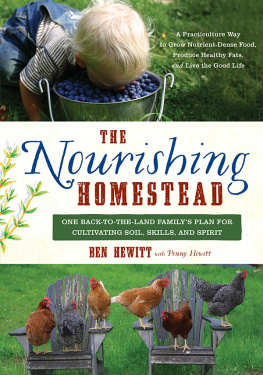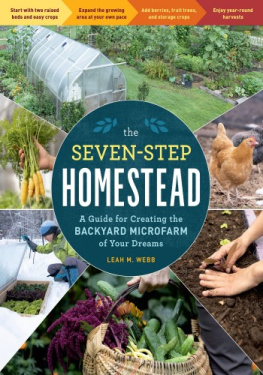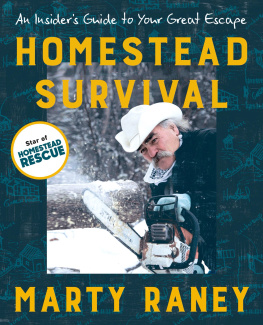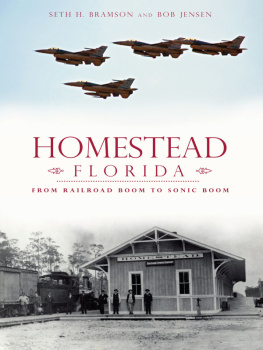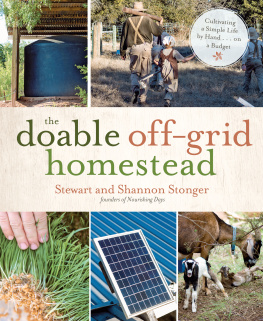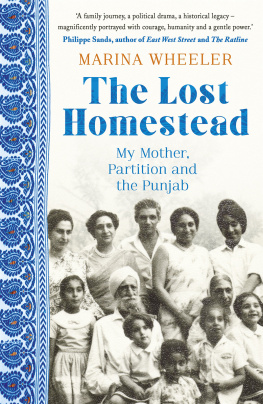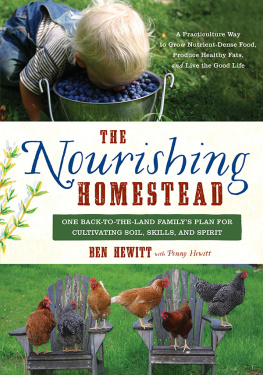Praise for
The Nourishing Homestead
Nesting deeply into a farmstead requires skill, patience, and the right mindset. Sharing his insights after nearly two decades of this life, Ben Hewitt beckons others to follow in his success. Are you intimidated by a noncorporate farmstead life? The Nourishing Homestead empowers anyone aspiring to such a life: Yes, you can.
Joel Salatin , farmer and author
If Walden were a how-to book and updated for the twenty-first century, The Nourishing Homestead would be it. Whether you have land or not, are a hardcore homesteader or a suburban gardener, youll find this book packed with countless how-to gems for personal and family liberty. The practical usefulness of this book is hard to overstate; the Hewitts have written a manual girded by direct experience alone, not ideologya true rarity.
Ben Falk , author of The Resilient Farm and Homestead
The Nourishing Homestead is just perfect for young families embarking on a homestead way of life. Ben Hewitts approach to (and philosophy of) homestead economics is alone worth reading the book. His views on what he defines as real food and deep nutrition might rattle the readers brain occasionally, but all for the good. Beyond that, the rich detail of information on how to make small-scale farming work successfully rings with genuine know-how and conviction.
Gene Logsdon , author of Gene Everlasting
Inspiring and informative. A brilliant union of theory and practice.
Shannon Hayes , author of The Radical Homemaker
A wise, poetic, and eminently practical manifesto, The Nourishing Homestead provides all the ingredients for a nutrient-dense life. Ben and Penny Hewitt teach us how to farm, but more importantly, why to farm. In so doing, they have seeded nothing short of an agrarian revolution.
Rowan Jacobsen , author of American Terroir
and Apples of Uncommon Character
Copyright 2015 by Ben Hewitt and Penny Hewitt.
All rights reserved.
Unless otherwise noted, all photographs copyright 2015 by Ben Hewitt and Penny Hewitt.
No part of this book may be transmitted or reproduced in any form by any means without permission in writing from the publisher.
Project Manager: Patricia Stone
Developmental Editor: Makenna Goodman
Copy Editor: Laura Jorstad
Proofreader: Brianne Bardusch
Indexer: Linda Hallinger
Designer: Melissa Jacobson
Printed in the United States of America.
First printing January, 2015.
10 9 8 7 6 5 4 3 2 1 15 16 17 18 19
Our Commitment to Green Publishing
Chelsea Green sees publishing as a tool for cultural change and ecological stewardship. We strive to align our book manufacturing practices with our editorial mission and to reduce the impact of our business enterprise on the environment. We print our books and catalogs on chlorine-free recycled paper, using vegetable-based inks whenever possible. This book may cost slightly more because it was printed on paper that contains recycled fiber, and we hope youll agree that its worth it. Chelsea Green is a member of the Green Press Initiative ( www.greenpressinitiative.org ), a nonprofit coalition of publishers, manufacturers, and authors working to protect the worlds endangered forests and conserve natural resources. The Nourishing Homestead was printed on paper supplied by RR Donnelley that contains at least 10% postconsumer recycled fiber.
Library of Congress Cataloging-in-Publication Data
Hewitt, Ben, 1971 author.
The nourishing homestead : one back-to-the-land familys plan for cultivating soil, skills, and spirit / Ben Hewitt with Penny Hewitt.
pages cm
Includes bibliographical references and index.
ISBN 978-1-60358-551-4 (pbk.) ISBN 978-1-60358-552-1 (ebook)
1. Urban homesteadingVermont. I. Hewitt, Penny, author. II. Title.
HD7289.42.U62V54 2015
363.583dc23
2014035895
Chelsea Green Publishing
85 North Main Street, Suite 120
White River Junction, VT 05001
(802) 295-6300
www.chelseagreen.com
Contents
1
the evolution of our homestead
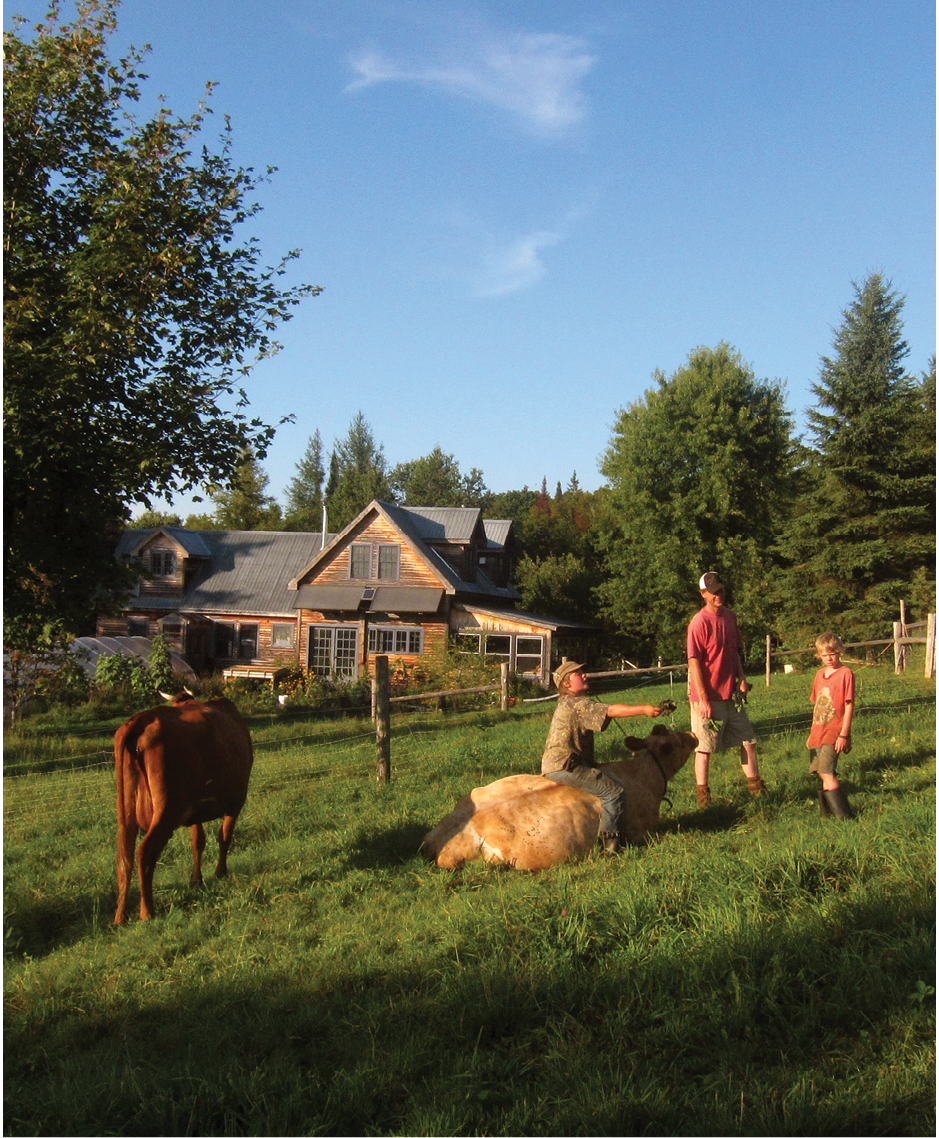
I live with my wife, Penny, and sons, Finlay, 12, and Rye, 9, in the northern Vermont dairy-farming community of Cabot. You may have heard of my hometown, but if so, its probably only because of the eponymous creamery that has won numerous awards for its butter and cheese. Cabot is a working-class town of about 1,200, and it is currently home to a dozen family-scale dairy farms that milk anywhere from about 30 to perhaps 100 cows. Ironically, the overwhelming majority of the milk produced in the town of Cabot doesnt find its way into the products that bear the towns name; the dysfunction inherent to the dairy industry compels most of our neighbors to sell their milk to organic distributors.
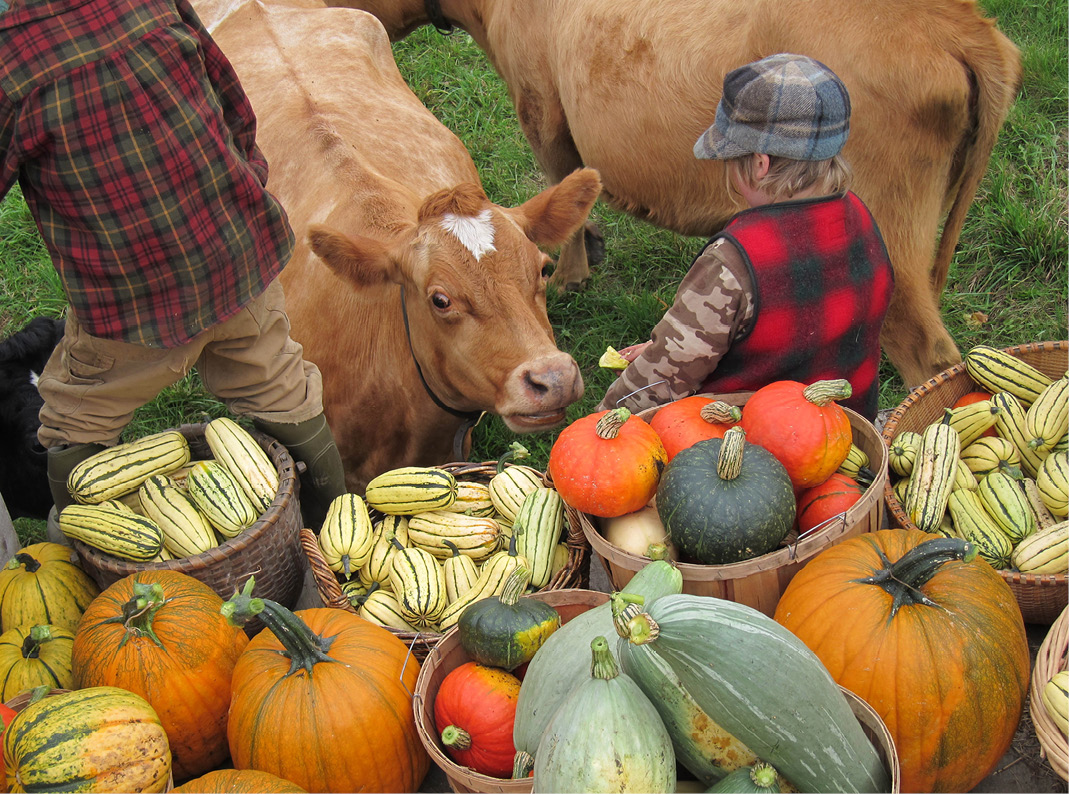
My family and I operate a highly diversified homestead on 40 southwesterly facing acres about a mile north of the village proper. Or maybe its not a homestead; maybe its a farm. Or is it a farmstead? The definitions of each seem so personal and malleable that Im never really sure what to call our place. Nor am I certain it matters. Of our 40 acres, about 10 are in pasture, vegetable, and fruit production; the remaining 30 comprise a woodlot of typical northeastern species, plus a handful of interlopers, riding the tide of wetter, warmer winters and the expanding growing season. There is spruce and balsam fir, maple hard and soft. White birch and yellow birch, elm and white ash. We have a few small stands of red oak, something our forester assures us is quite rare for the region, but is nonetheless real nice to see.
Penny and I came to this property in 1997, at the end of an exasperating quest to find a piece of land that was suitable for growing at least a portionand hopefully, a rather significant portionof our food, and which we could afford. In isolation from each other, these were fairly attainable goals, but when combined in the context of our modest budget of $30,000, they seemed for a time downright unattainable. We trudged through one 5-acre swamp after another, our boots squelching and slurping in the muck, before picking and tripping our way across the wounded landscapes of recent clear-cuts on the handful of parcels that fell in our price range. Our sense of futility grew in direct proportion to the number of unsuitable properties we were shown.
Unlike many would-be homesteaders, we werent fleeing stressful careers, nor had we soured on the hurly-burly of city life. Our desire to live in connection with the land and the natural world was merely an extension of our lives thus far. I was born and raised in rural northern Vermont, and although Pennys early years were passed in the New Jersey suburbs, shed spent all of her adult years working on vegetable farms, earning the dubious distinction of becoming the first in her family to leave college in order to farm. We met on the island of Marthas Vineyard, where Id gone for the winter to make a quick buck working construction, and where she was alternately farming and digging ditches. I mean this literally: We actually met on a construction site after shed been hired to dig a ditch for the sprinkler system, and from the moment she pedaled up the job-site driveway, with a shovel and pickax strapped to the frame of her bicycle, on a rainy January morning, I was a goner.
Wed visited a local bank and, owing to our good credit, had been pre-approved for a low six-figure mortgage, but that would have necessitated buying property with a house, since banks dont like to lend unless there is a physical structure they can reclaim. Besides which, neither of us made more than $8 per hour at the time, although our penchant for thriftwhich among other trials included living in a tent on a friends land until the first snows of early Decemberhad enabled us to save $15,000. According to the banks spreadsheets, based on calculations that eluded our sense of logic, we could afford the monthly payment on a $100,000-plus mortgage. Maybe the bank was right. But even if the bank was right, it seemed wrong.
Next page
